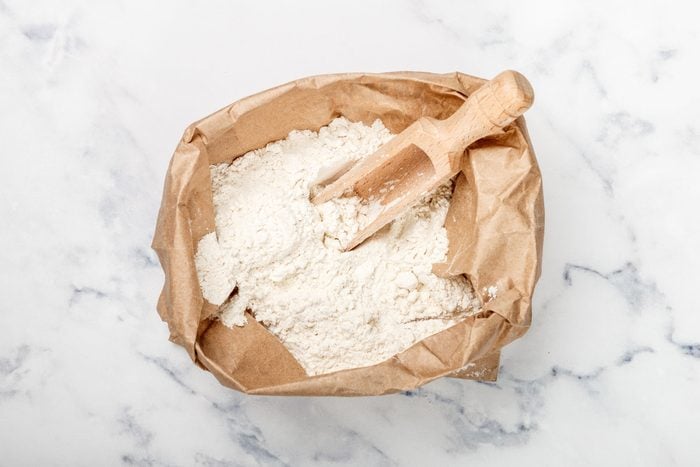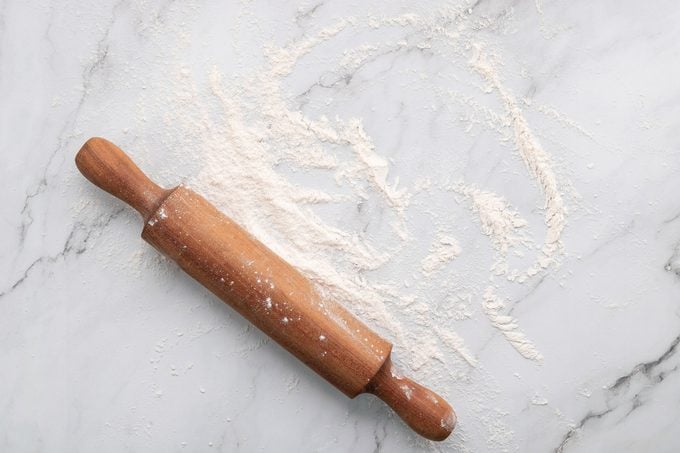Does Flour Go Bad and Can You Use Expired Flour?
Updated: Mar. 05, 2024

Does flour expire? The short answer is yes. Learn how long different types of flour last and how to store them.
Flour is one of the most versatile ingredients, especially when it comes to baking. No matter the type, flour provides structure, creating bonds to support the other baking ingredients in everything from fresh homemade bread and crispy pizza dough to fluffy cakes and your favorite chocolate chip cookies. It can also be used to coat chicken before frying or thickening a roux for mac and cheese.
With so many uses, it’s likely you have a bag of flour on hand in your pantry. But just how long can it stay there? Does flour go bad? The short answer is yes, flour does go bad; but the long answer depends on the type of flour and how it’s stored.
Does flour expire?
Flour seems like one of those pantry items with an unlimited shelf life, but it does actually expire. All flour has a printed “best by” or “best if used by” date somewhere on the package. This date reflects the manufacturer’s suggested date for best quality. You can generally use flour for four to six months past this date, depending on how you’ve stored it—more on that below!
How long do different types of flour last?
There are many types of flour, and each has a different expiration date. For example, whole grain flour contains more oils than refined flour (like all-purpose flour), and gluten-free flours containing nuts are high in fat, so these flours can become rancid more quickly. Unless the best by date is within a few months of purchasing, we prefer to assume the clock starts ticking based on the purchase date instead of the printed best by date.
Storage conditions are stable and predictable in a warehouse, but things vary once you bring the flour home and open the bag. Once the flour is exposed to air, it begins to oxidize and can slowly go bad.
Here’s a general rule of thumb about how long each type of flour will last after the purchase date. You can extend the dates below by roughly double when you store flour in the freezer.
All-purpose flour
This is the most common type of flour you’ll find on the baking aisle shelves. Milled from a blend of wheats, it is used for everything from cakes and cookies to quick breads, scones and even pizza dough. Because it is refined and contains less protein, all-purpose flour will keep up to one year.
Bread flour
Bread flour has a higher protein content thanks to hard wheat. It is used for baking bread, pretzels and sometimes pizza dough. With its higher protein content, it lasts a shorter amount of time, ranging from four to six months.
Cake flour
Cake flour has a very low protein content. It is milled from soft wheat into a fine, light powder, which is then bleached to make its proteins even weaker. That weak protein structure makes it ideal for baking fluffy desserts like angel food cake and red velvet cake. Cake flour can be stored for six months to one year.
Nut flours
Nut flours are made by finely grinding nuts. Because of that, they have a high fat content and are more susceptible to moisture. They’re great for gluten-free baking but will only last for three to six months.
Pastry flour
Pastry flour is another finely milled soft wheat flour. It’s used to make flaky pastries such as croissants and pie crusts. Pastry flour will last from six months to one year.
Self-rising flour
Self-rising flour is made up of all-purpose flour, baking powder and a pinch of salt. The included baking powder helps to provide a consistent rise in items such as biscuits and breads. It can be stored for four to six months, which helps to ensure the baking powder in the flour is still fresh.
Whole wheat flour
Whole wheat flour is milled from hard wheat and has a high protein content. It can be used in everything from breads and pizza dough to muffins, quick breads and scones. Whole wheat flour can be stored for three to six months.
How can you tell if flour is bad?
Flour should be white or cream-colored with a smooth, dry texture and a neutral aroma. It can have some lumps, but they should dissolve easily when the flour passes through your fingers. If flour is gray or yellowing, contains lumps due to moisture or smells musty, sour or generally unpleasant, it’s time to toss it.
Flour with signs of insect or rodent infestation (i.e. little brown or black spots in the flour or holes and tears in the bag) should be thrown away regardless of the condition of the flour. (This is how to get rid of common pantry pests.)
Can you use expired flour?

Does flour expire? Yes. But can you use it after its best by date? If you’ve stored flour properly and it doesn’t show any signs of turning rancid such as a foul smell or mold, it’s most likely still safe to use after the best by date. Most of the time, using expired flour won’t make you sick. But there is a small chance it can. Just like what can happen if you eat raw flour, eating rancid flour can cause symptoms of food poisoning like stomach pain, vomiting or diarrhea, so it’s definitely one of those items you don’t want to leave in the pantry too long.
Should you use flour once it’s expired? If you’re storing flour in the freezer, it’s likely okay. Otherwise, probably not. Expired flour won’t have the same quality in flavor and texture, so your recipe won’t turn out the same. When it comes to self-rising flour, which contains baking powder, expired flour will create baked goods that don’t rise.
If you feel bad throwing away expired flour, toss it into the compost bin. It does take a while to compost, so you’ll want to mix in plenty of green materials like fruits and vegetables. You can also use it as an insect repellent—ants won’t cross a line of flour.
How to Store Flour
It’s best to store flour in an airtight container, which will keep it away from moisture. Flour will last longer when stored at cooler temperatures, so it’s best to keep the container in a cool, dry place. For example, all-purpose flour lasts about a year in 70°F storage temperatures, or two years if stored at 40° or lower.
If you pick up a bulk bag of flour—and you have the space—consider storing a small amount in the pantry for everyday use and the rest of the bag in the freezer for refilling the pantry container as needed.
